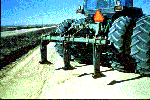 |
Calcareous and gypsiferous soils can also be improved by the incorporation
of organic materials. In some cases deep plowing may be helpful
where the gypsum or carbonate rich layers occur within reach of
the plow.
|
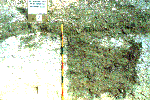 |
When petrocalcic horizons occur close to the surface they present
major constraints for agricultural development. One of the oldest,
simplest and most successful management techniques for the use of
these soils is illustrated here. Holes are dug through the cemented
horizon and filled with soil material. These sites are then planted
to tree crops.
|
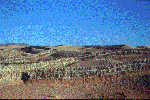 |
In many desert areas wind erosion is a serious problem. This slide
shows an effort by farmers in Morocco to combat wind erosion and
prevent the encroachment of sands onto agricultural fields.
|
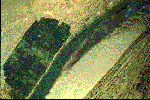 |
Soils of arid regions comprise an important global resource because
of their wide extent, high natural fertility and potential for multiple
cropping. With proper management and water for irrigation many Aridisols
can be highly productive. If irrigated, their primary limitations
for agriculture are soil horizons with concentrations of soluble
salts, sodium, calcium carbonate, gypsum and cemented pans.
|
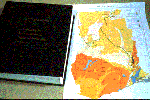 |
Taxonomic class names in Soil Taxonomy convey important
information about these soil conditions to trained soil scientists,
agronomists and land use planners. For the efficient use of our
land resources, soils should be classified and mapped so that the
best sites may be selected for agricultural development.
|
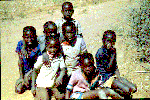 |
We have to think about future generations. Are we doing enough
to develop the technology for them to feed themselves? Are we conserving
our soil resources so that they too can have comfortable lives?
|
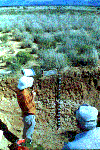 |
It is hoped that an understanding of the taxonomic classes of the
Aridisol order, the logic of their classification, and an appreciation
of their management characteristics have been conveyed in this presentation.
|

